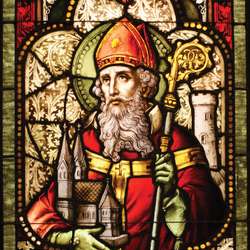Saint Patrick’s Day
Origins
Mar 17, 2021 - By Sue McCarthySaint Patrick’s Day, March 17th is upon us again in this pandemic year. For many it means wearing green, drinking green beer, listening to jigs and reels, singing ‘The Black Velvet Band’ and having a party. In non-Covid times, annual Saint Patrick’s parades are de rigour and it is a national holiday in Ireland and a provincial one in Newfoundland.
Saint Patrick’s Day is an official Christian feast day as of the early 17th century and is observed by the Catholic Church, the Anglican Communion (especially the Church of Ireland), the Eastern Orthodox Church and the Lutheran Church. The day commemorates Saint Patrick and the arrival of Christianity in Ireland and celebrates the heritage and culture of the Irish in general.
 According to historical records, Saint Patrick was a 5th-century Romano-British Christian missionary and bishop in Ireland. Patrick is believed to be responsible for converting the pagan Irish to Christianity. Patrick’s efforts against the druids were eventually turned into an allegory in which he drove “snakes” out of Ireland, despite the fact that snakes were not known to inhabit the region.
According to historical records, Saint Patrick was a 5th-century Romano-British Christian missionary and bishop in Ireland. Patrick is believed to be responsible for converting the pagan Irish to Christianity. Patrick’s efforts against the druids were eventually turned into an allegory in which he drove “snakes” out of Ireland, despite the fact that snakes were not known to inhabit the region.
Tradition holds that he died on 17 March and was buried at Downpatrick. Over the following centuries, many legends grew up around Patrick and he became Ireland’s foremost saint.
We may be celebrating this year in socially distanced venues or in our own homes but raise a glass of cheer for Saint Patrick and all things Irish. It is also time to celebrate the advance of spring and warmer weather. Slainte!

https://www.reverbnation.com/davidlewisluong/album/155569-scents-of-keeva

Lá Fhéile Pádraig sona daoibh